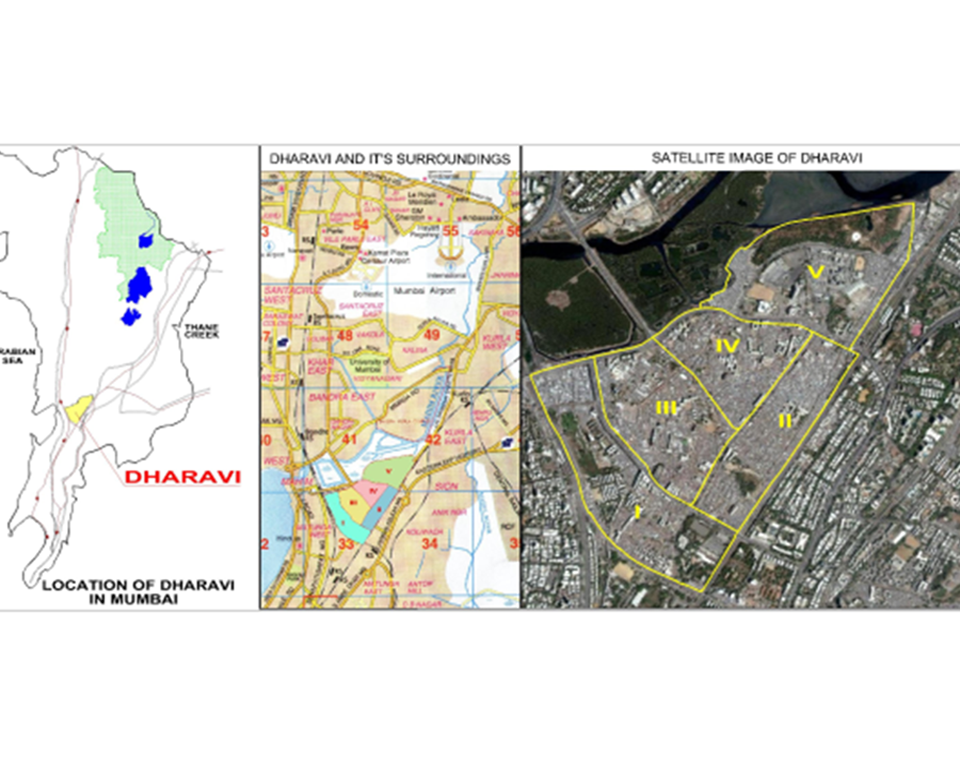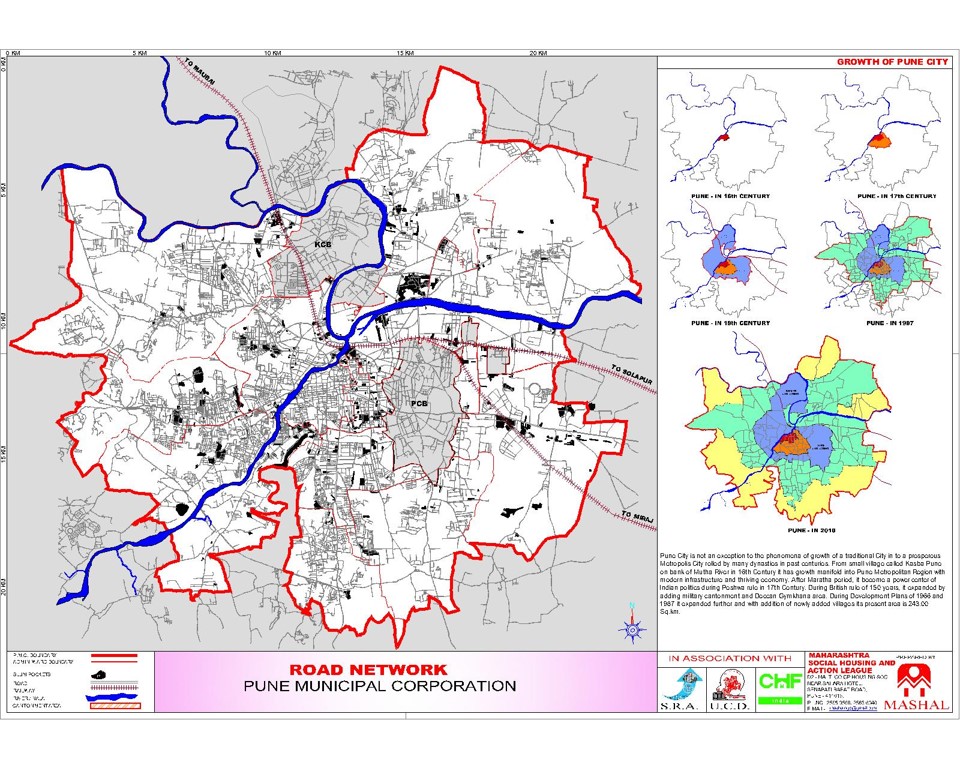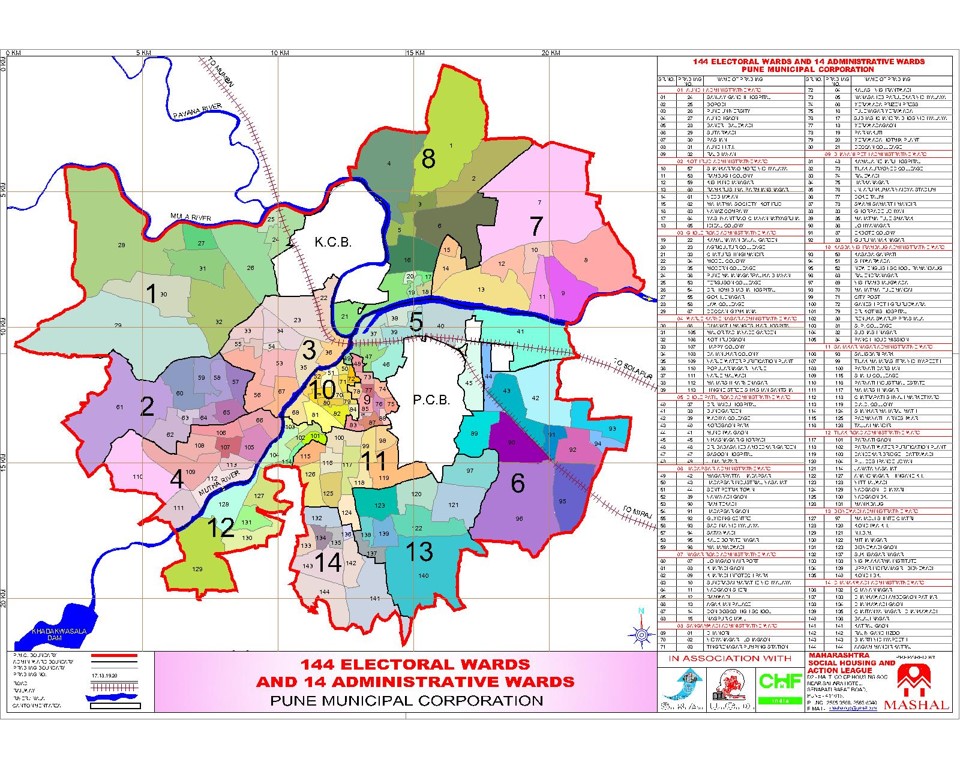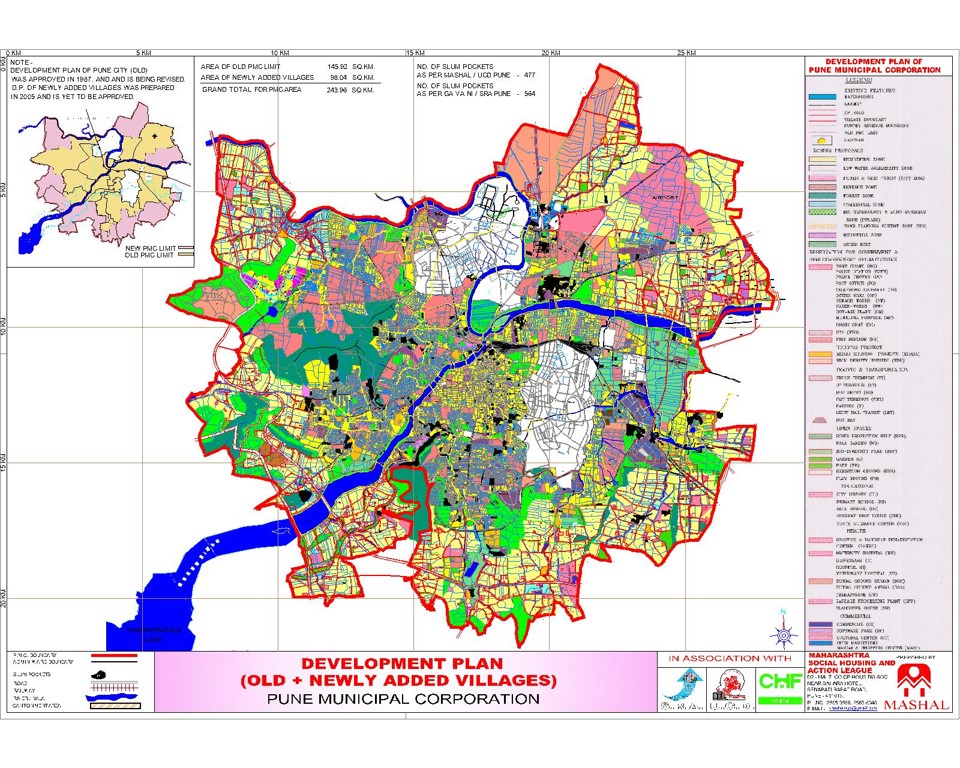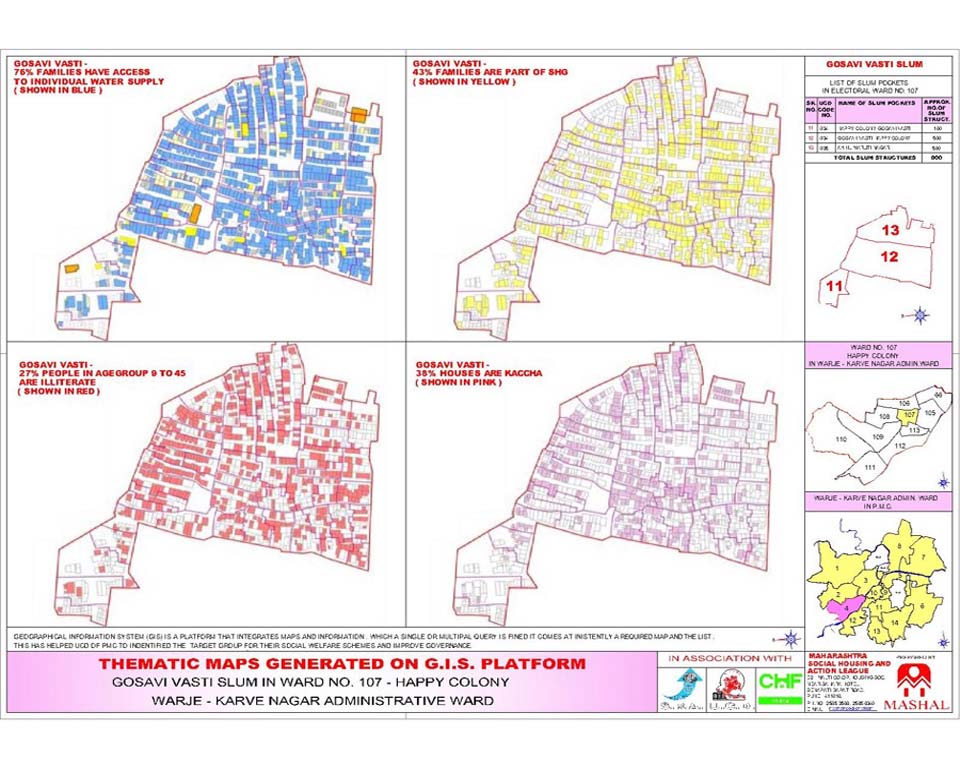SLUM ATLAS AND SLUM MAPPING
Slum Atlas 2.0 (Ongoing Project)
Goals of the project: The Mapping and Survey of all the slum pockets in Pune were conducted between 2007-2011. Now, after 10-12 years, MASHAL has decided to use state of art: Drone Technology and Revisit all the slums to ascertain changes.
The Slum Atlas (2007 to 2009)
Slum mapping and GIS based survey (2004-2007)
CDP and DPR for Pune, Nasik (2007-2008)
Dharavi Rehabilitation Project (2008-2010)
Dharavi is divided into five Planning Sectors for implementation of DRP. MASHAL carried out above survey for each of the above sectors independently. It used satellite image, survey maps of City Survey Department, information from SRA, RGNP, MCGM, SLR etc. to complete cadastral survey of 57,000 slum structures on total 239 hectors of land in Dharavi.
RAY (Rajiv Awaas Yojana) (2011-2014)
The main focus of RAY is an integrated approach aimed at bringing within the formal system those who are forced to live in extra-formal spaces and in denial of right to services and amenities available to those with legal title to city spaces, and at correcting the deficiencies of the formal system of urban development and town planning that have failed to create conditions of inclusiveness and equity so that, henceforth new urban families whether by way of migration or natural growth of population have recourse to housing with municipal services, and are not forced to create encroachments and slums and live extralegal lives in conditions of deprivation of rights and amenities.
MASHAL’s target for this project was to work in all slums of Pune. Socio economic information collected 60,078 HH (213 slum pockets) No. of slums mapped slum pockets 457 out of 477

